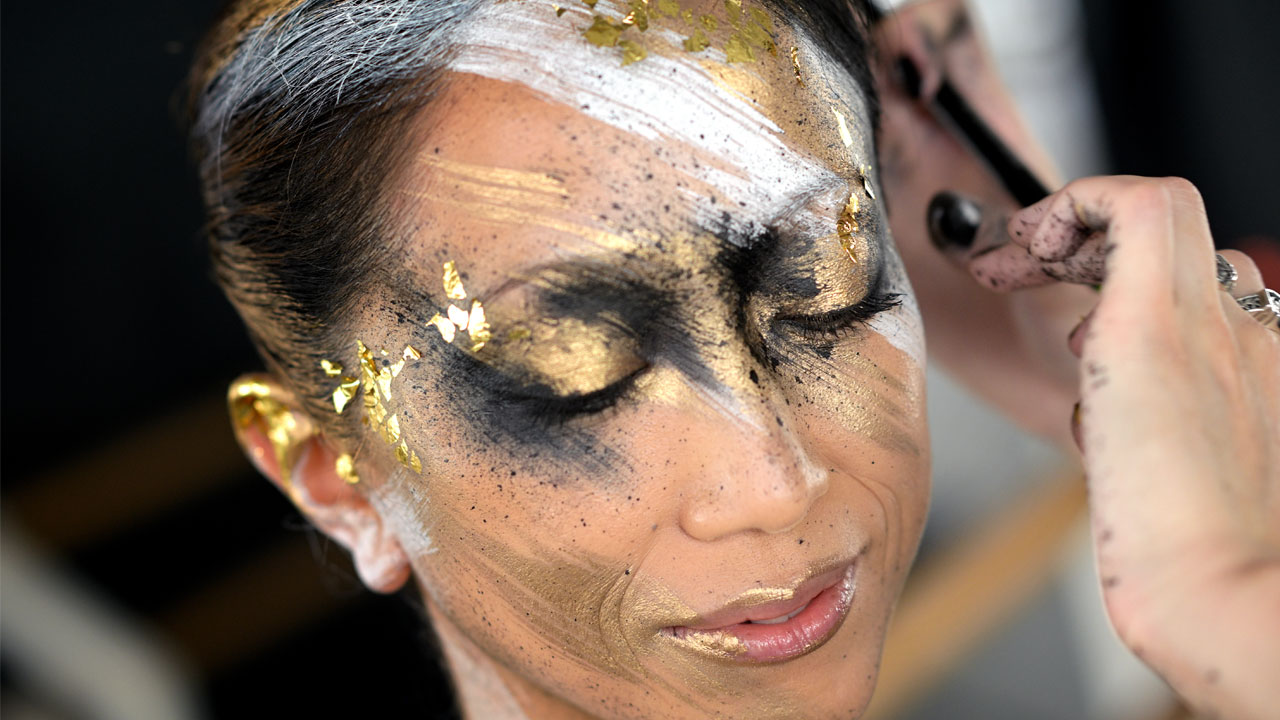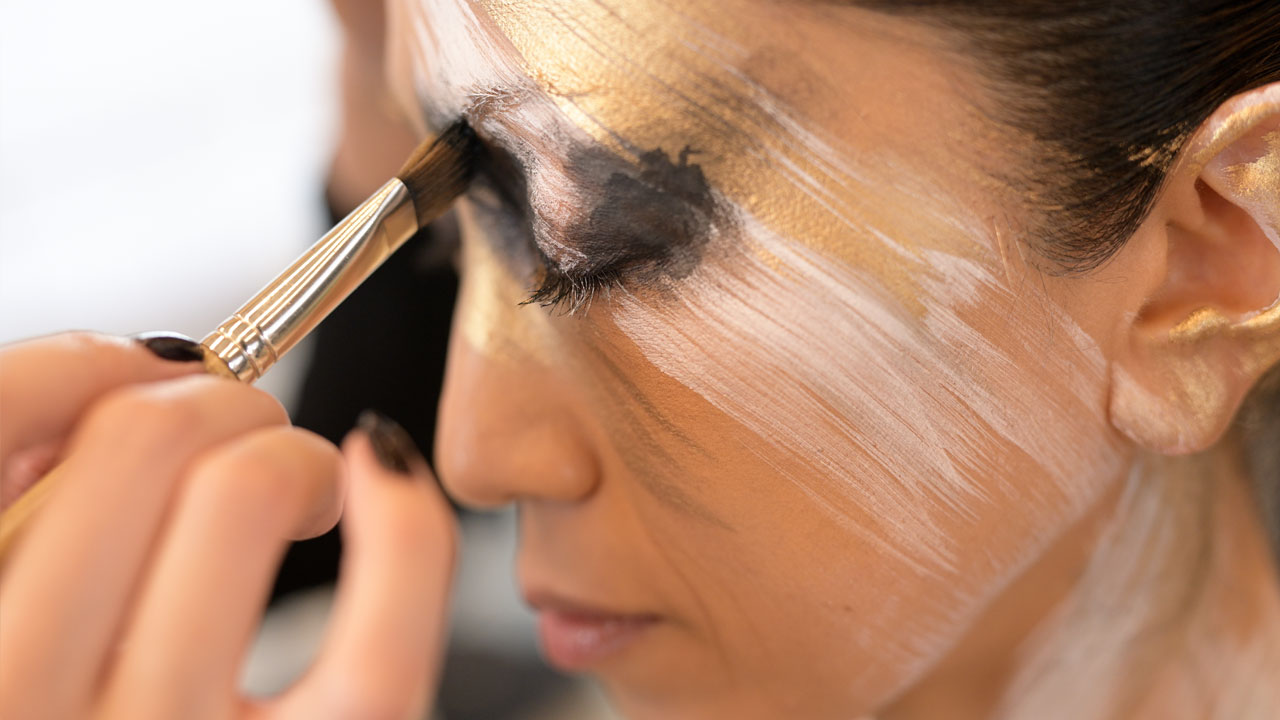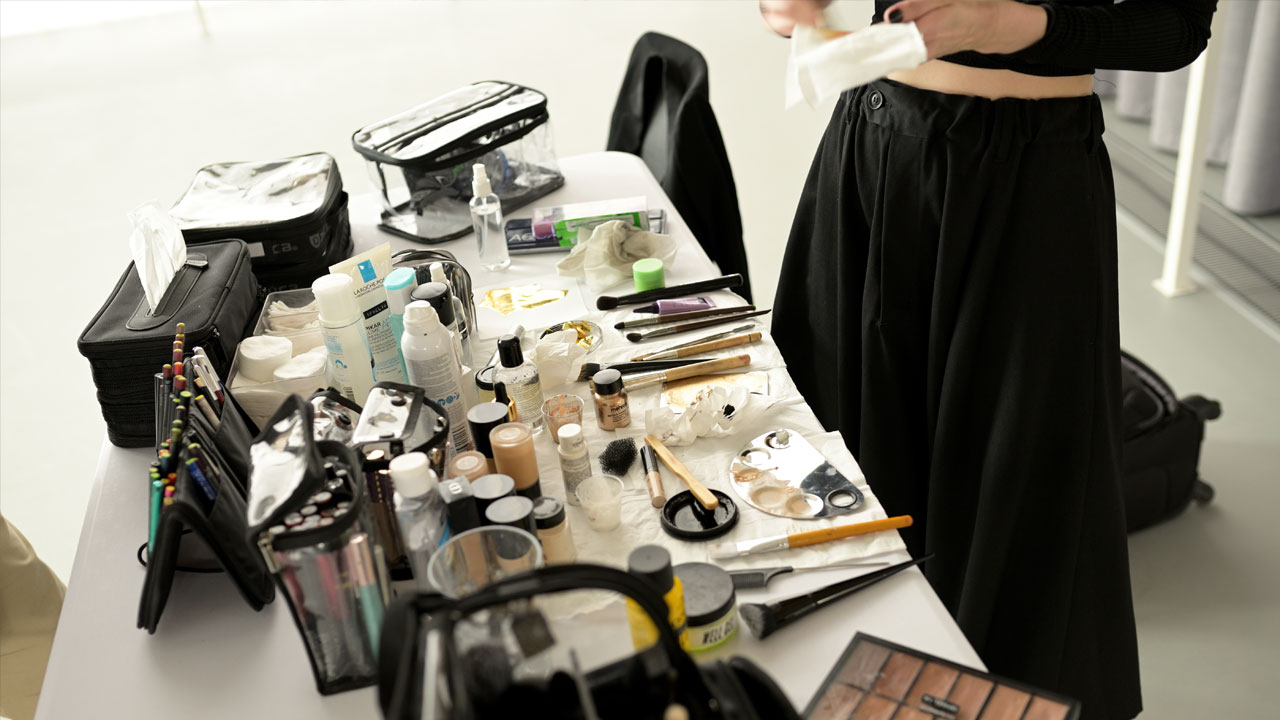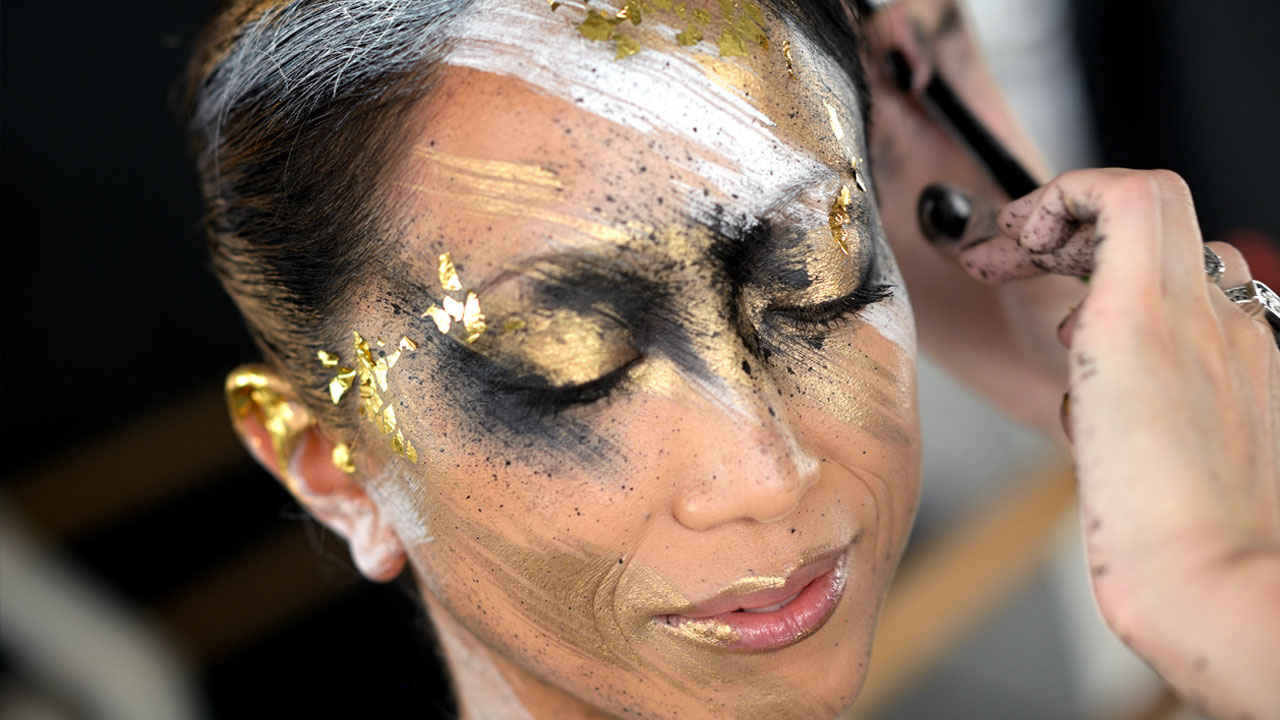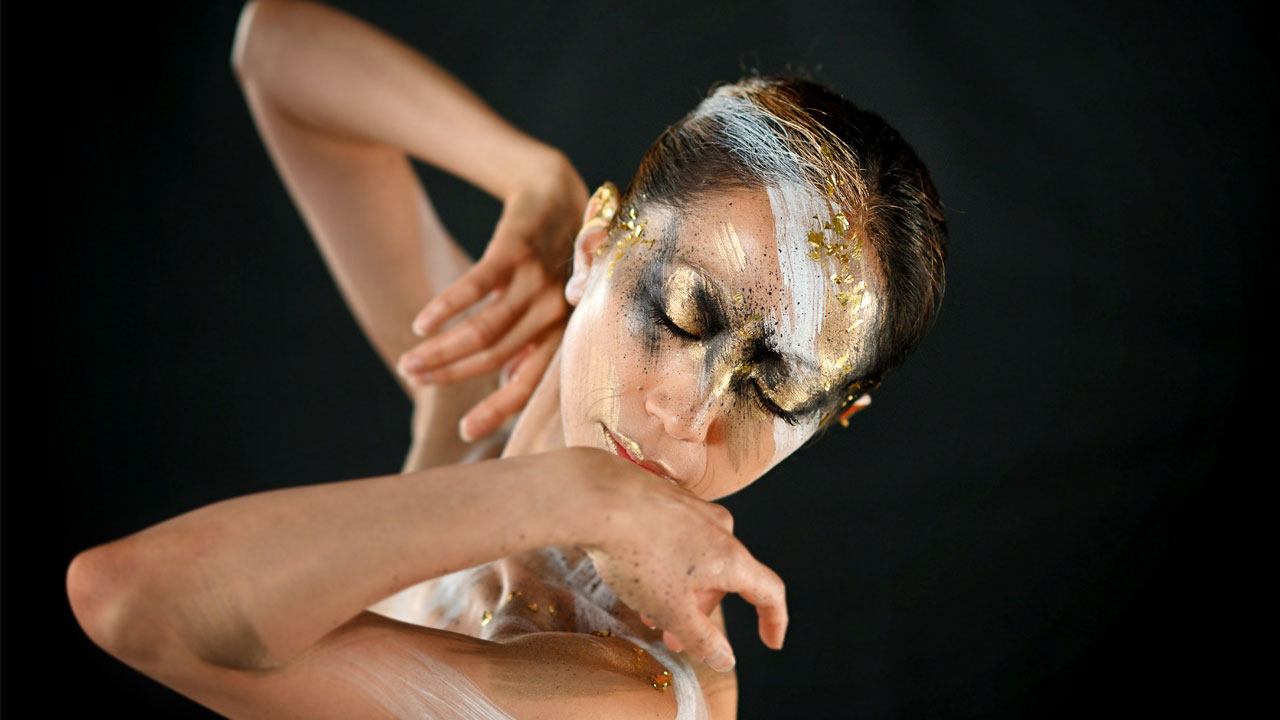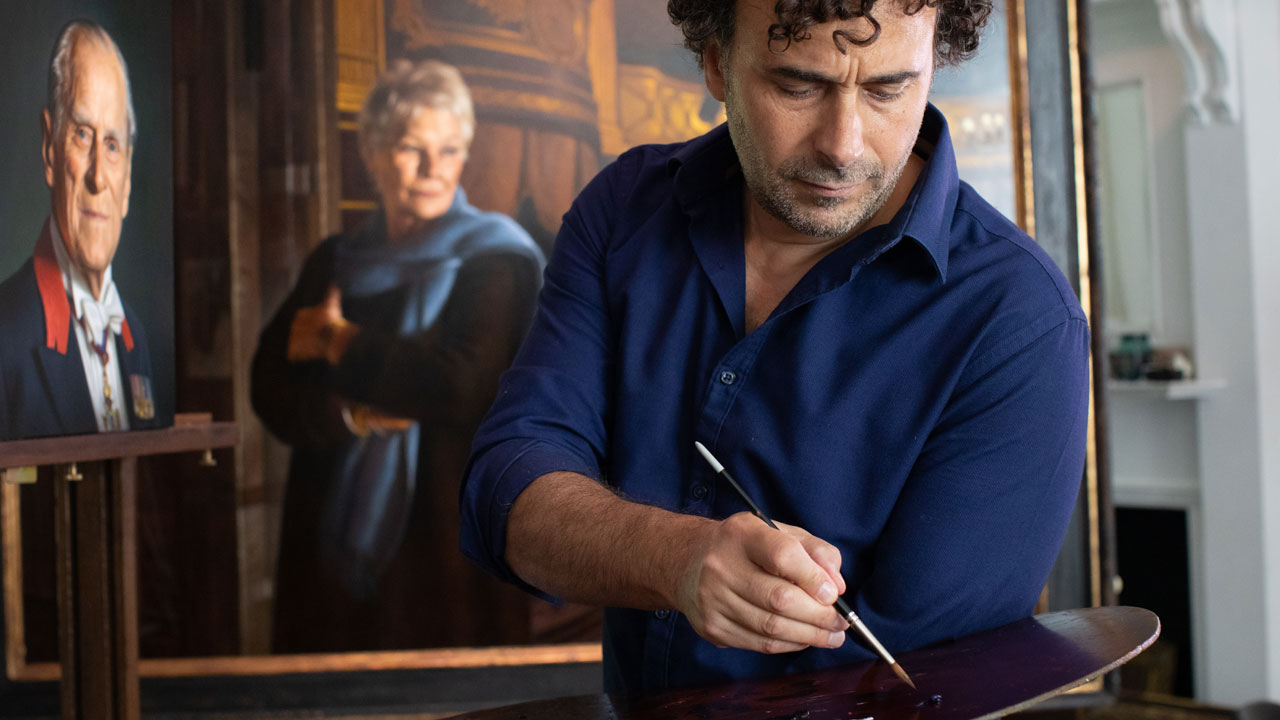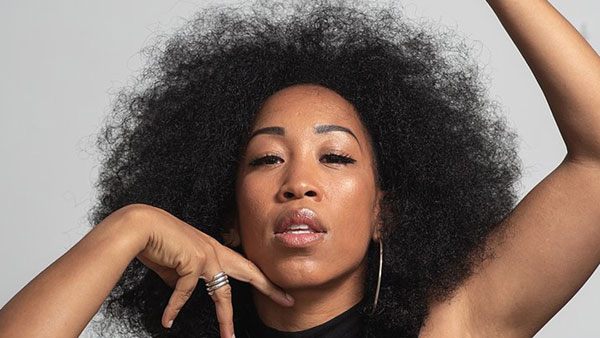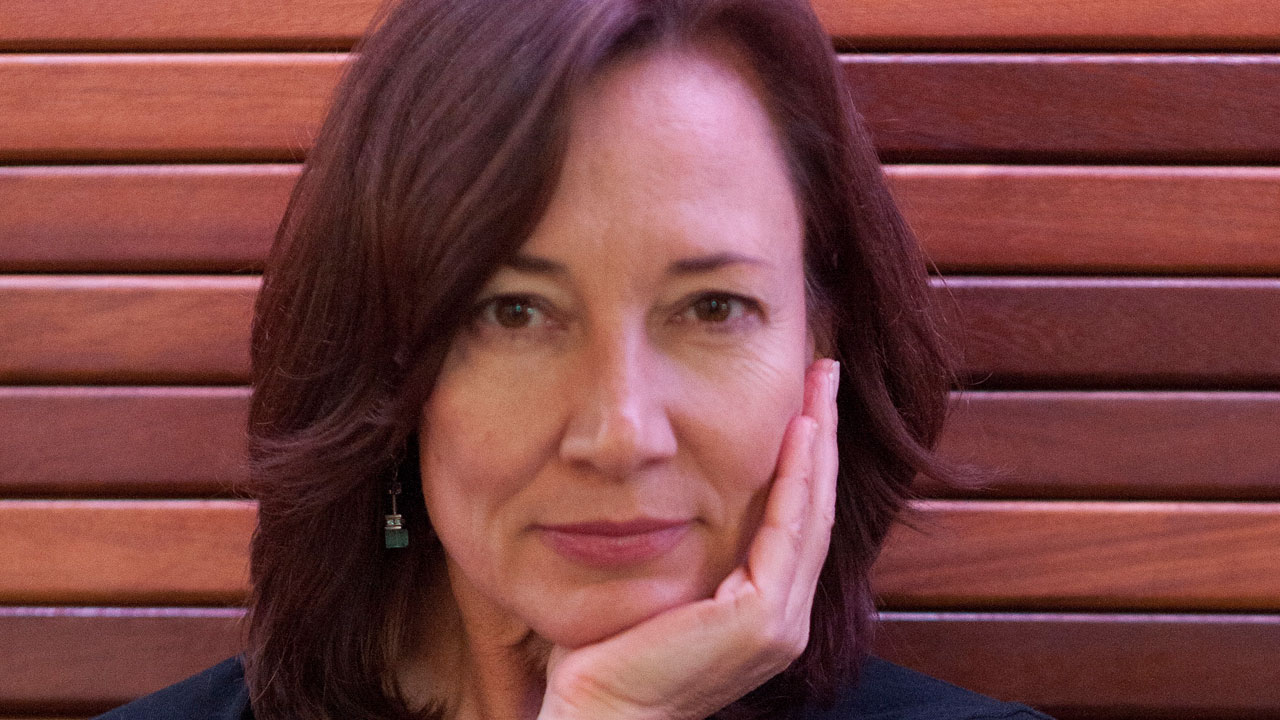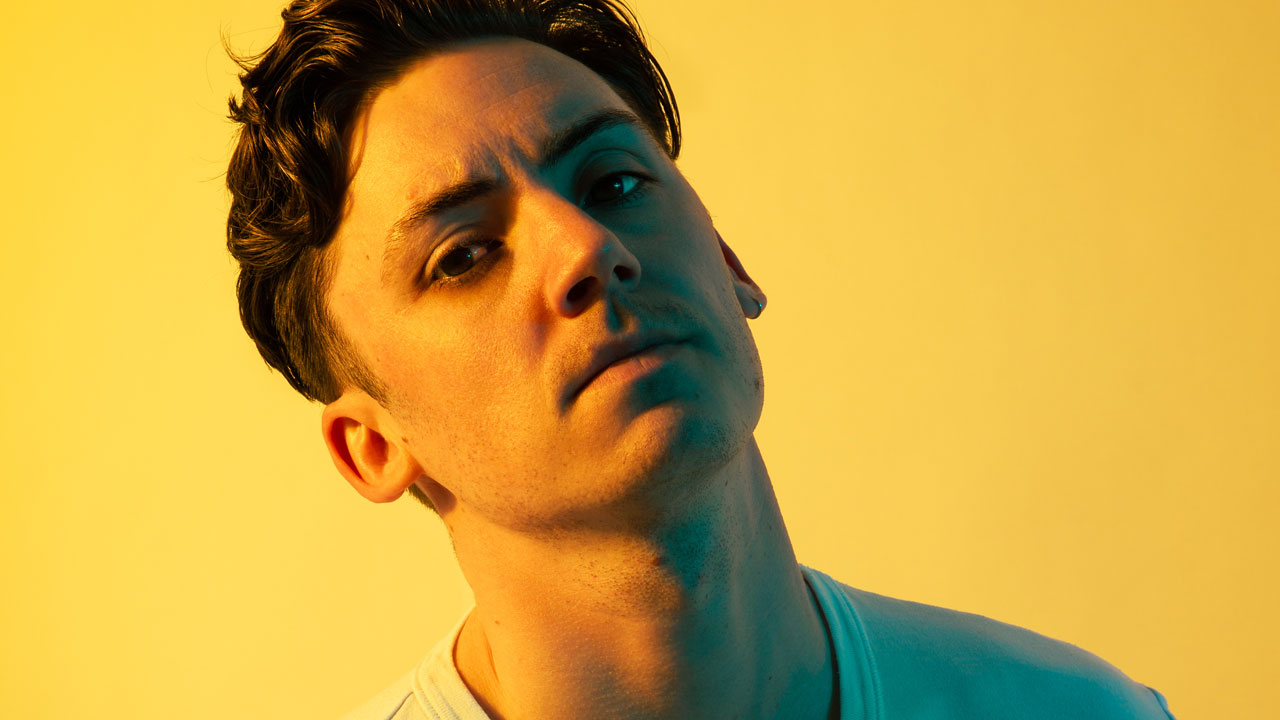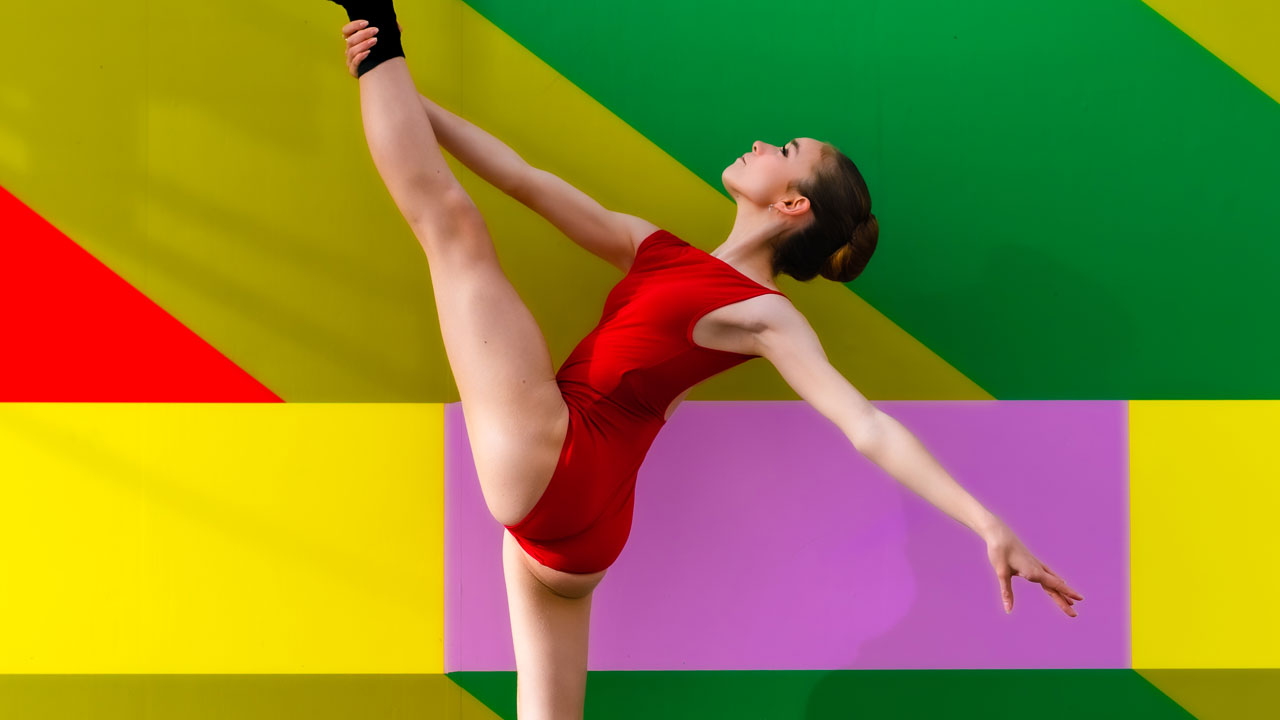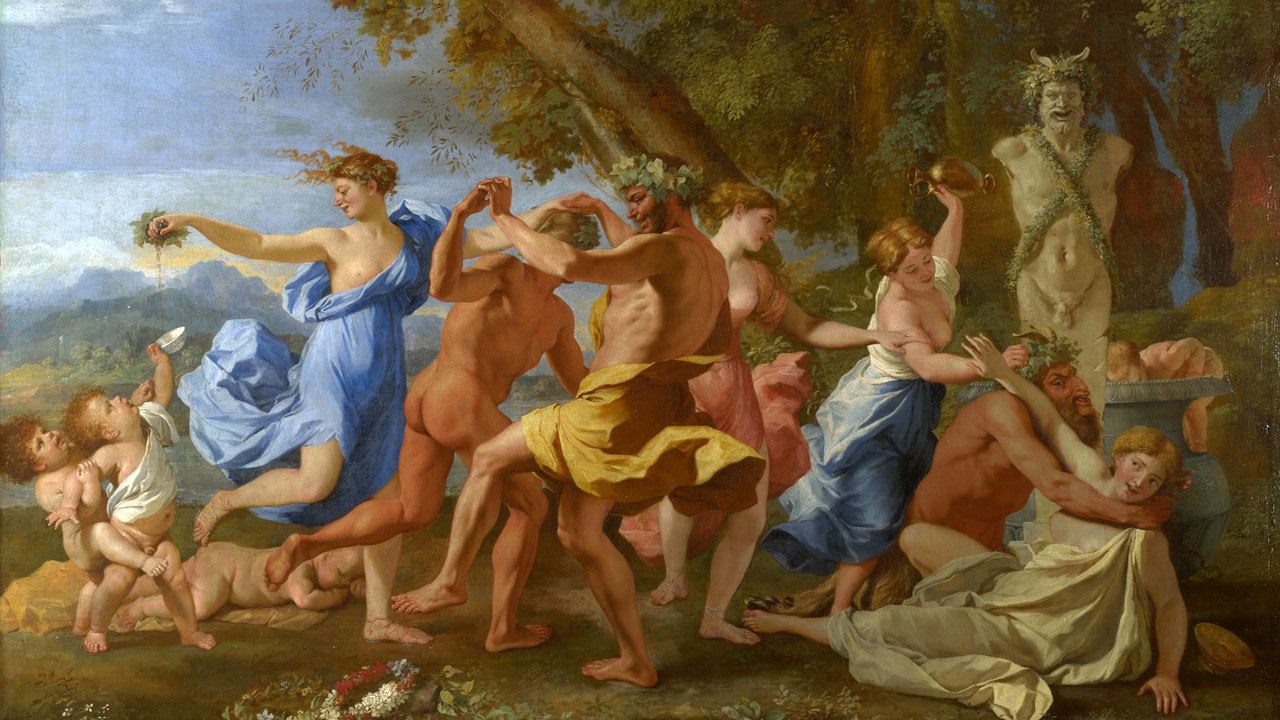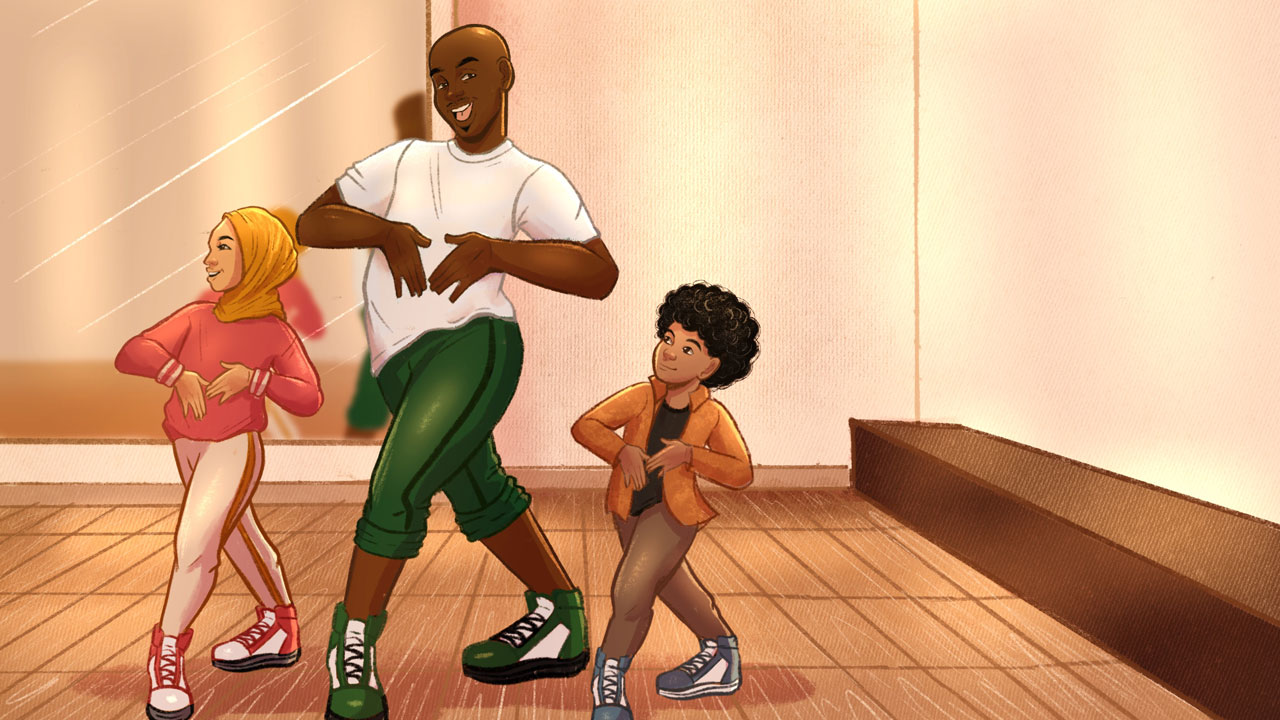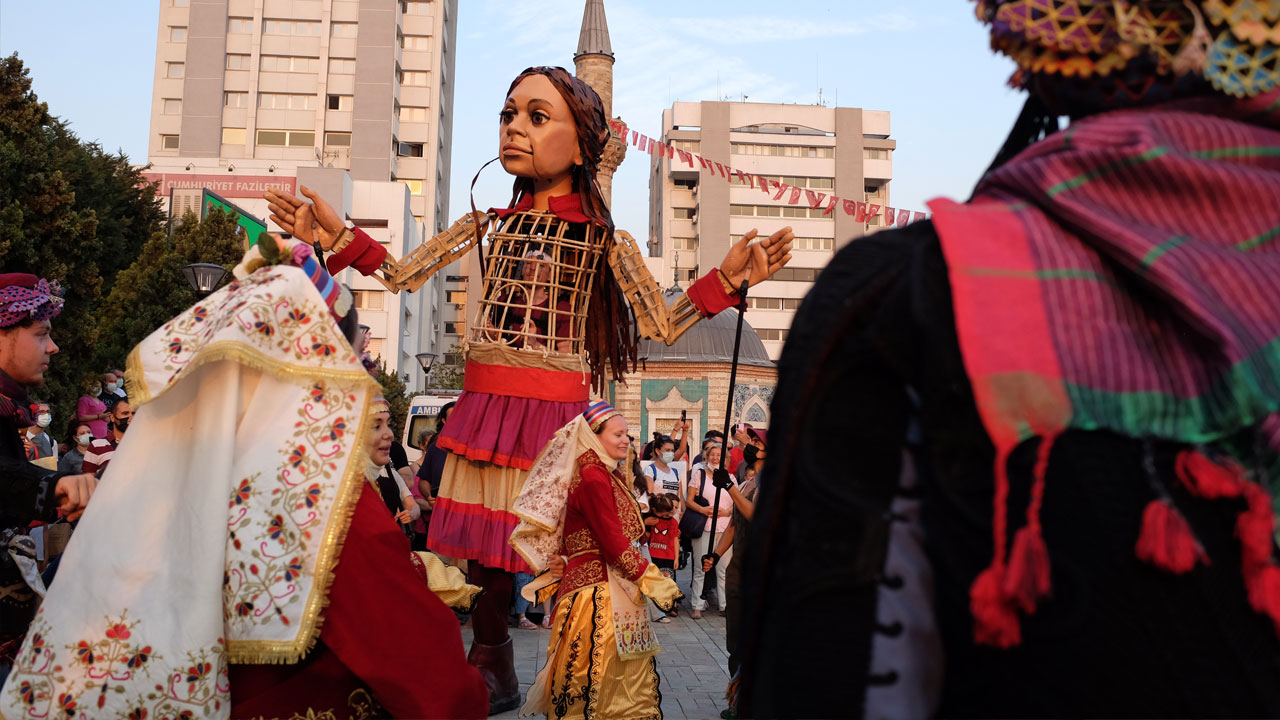Everything about the 1841 Paris first night of Giselle comes as a surprise: flaming gaslight, wires for flying, trapdoors – and the backstage clouds of powder and white handprints all over Albrecht’s dark velvet tunic. Giselle was the first full expression of the Romantic age’s artform, ballet, and its make-up was in pulverised form.
And in fact there wasn’t much of it visible, just a pale glow, that being the current mode. The 1789 French Revolution had wiped the faces of men and women of heavy slap based on toxic lead and oxides. After that, the ideal, even for stage beauty, was natural, with discreet use of mild pigments like extract of safflower or crushed cochineal beetle in safe bases. Skin was paled with rice powder for the corps and iridescent pearl powder (bismuth oxychloride) for primas, mixed with chalk or talc (both absorbed sweat), loaded into a gauze bag and patted on. Violet-tinted powder etherealised faces.
In illustrations of 1840s and 50s ballet, powder over cold cream simplifies faces to a peg doll’s, Fanny Elssler’s long nose and Marie Taglioni’s retroussé perk-up register alike. They have pomaded-in cherry lips and blush, perhaps brushed ash on brows; pioneer primas were brunettes, which helped. Photography was new, and portrait engravings tended to the generic, so the audience had no pre-interest in the tiny faces on big gaslit stages, and dancers were viewed bunhead to en-pointe toe, their movements and overall styling the attraction.
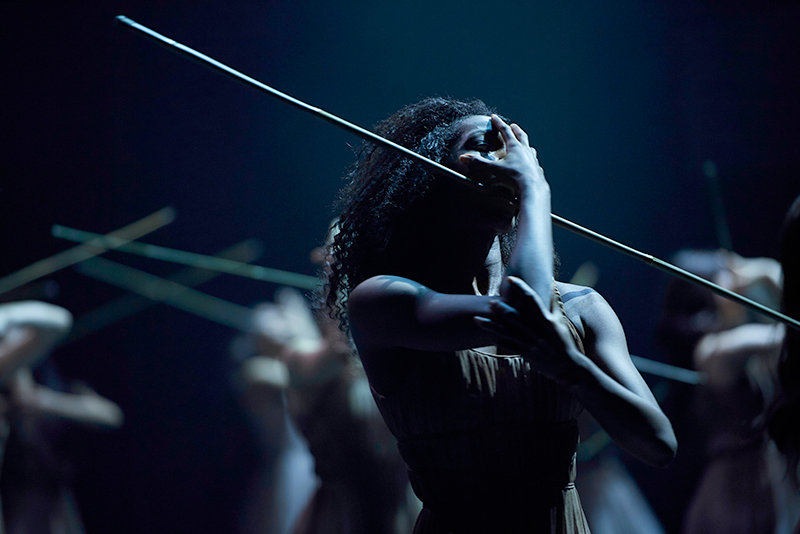
Akram Khan’s Giselle (English National Ballet).
Photo: Laurent Liotardo
Make up allowed a face to be painted like a canvas with a portrait of an imaginary character
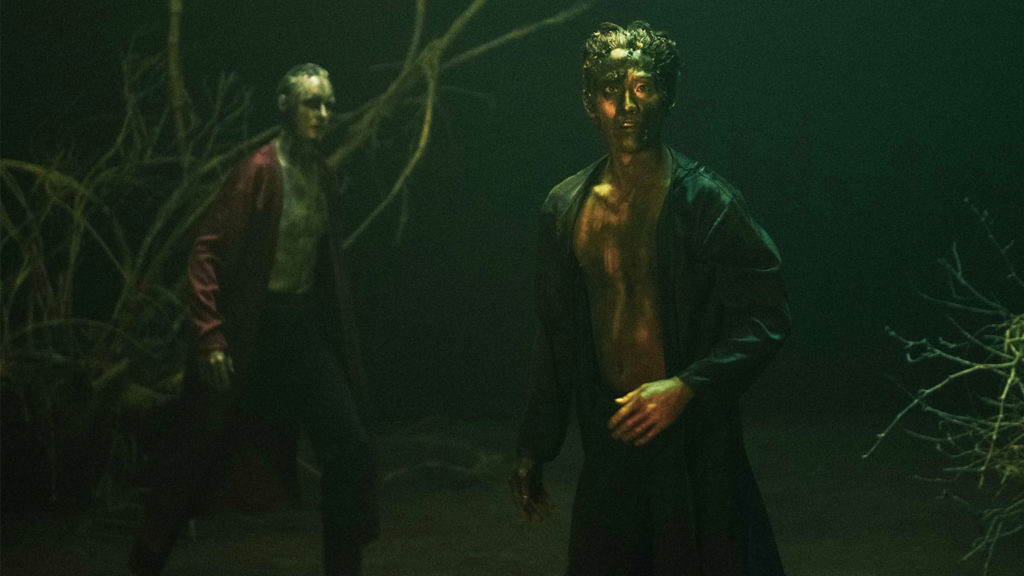

In small pharmacies that supplied performers, chemists tinkered with known safe powders: adding the new zinc oxide white pigment, kind to skin (still used in nappy rash creams), shaken with rosewater and glycerin into a ‘wet white’ applied with a cloth for an alabaster finish that didn’t rub off, to get round the touch problem. That still matters. Amelia Carrington-Lee, for 23 years English National Ballet’s department of one supervising wigs and make-up, says that the painted Creature in the trailer for Akram Khan’s new monster ballet pawprinted all over the ballerinas’ white dresses; when it’s staged he’ll have bare palms to save cleaning after every performance.
Character dancers who needed visages beyond dolldom followed straight actors in concocting pastes of powder, pigment and soft fat – lard or spermaceti wax from whales. This was soon smelly, as animal fat went rancid fast, but with effective results in ever-stronger stage lighting, freeing eyes from cavernous socket shadow. Excitingly, they allowed a face to be painted like a canvas with a portrait of an imaginary character, drawing personal drama directly on it.
Minor opera baritone Ludwig Leichner industrialised and marketed this idea, treating animal fat to keep it sweet longer, then substituting mineral oils just being extracted from petroleum. He expanded his home-made, handmade business to a Berlin factory in 1873, which produced grease sticks in a paintbox range, with manuals to instruct pro and amateur performers how to age, or to youthify themselves with strategic rouge.
Erina Takahashi is transformed for the Dance Gazette cover film
Erina Takahashi. Photos: Laurent Liotardo for DanceGazette. Make-up: Ophelia Liu.
Based on Sidi Larbi Cherkaoui’s Laid in Earth (English National Ballet): make-up by Natasha Lawes (digital) and Amelia Carrington Lee and Craig Forest-Thomas (stage).
Ballerinas began to follow actresses, whose photographs were widely circulated by the 1860s, into exploring exaggerated features – the glamour of acknowledged artifice – and to balance post-Romantic bulked-out hair. They were selective about Leichner products and imitations, since the sticks dragged skin, clogged pores and had to be slathered off with gunk and rags, but they liked his face-powders matched to approved skin shades, and thin liner sticks of red and pink for lips, or cool colours for eyelids. Look at local and guest dancers in Marius Petipa’s St Petersburg ballets as, and after, greasepaints joined the repertoire, and you see near-nude eyes strengthen and elongate. Nothing suggested nubility like eyelashes evident from the back of the stalls, and old tricks with candle soot and almond oil were superseded by a new product, Mascaro (not a typo), aka Cosmetique, a little block of dark-tinted soap applied with a small brush, originally devised to stiffen, and cover white hairs in moustaches or beards.
These complicating looks were still put on by the dancers themselves, the primas helped by maid or dresser. Carrington-Lee says that’s still how it works: she confers with the cast on faces in harmony with any show that’s not through-designed down to the eyebrows. The aim is not uniformity but enhanced legibility visible right to the top gallery. The dancers take the ideas and do the work, the corps entering their roles as they apply cosmetics, principals coming to her chair bringing lucky hairpins, favourite music, for styling and confessional chat. She teases that the boys try to get away with just the one line under the eyes, standard these 150 years, although she’s delighted by first soloist James Streeter’s skilled, curious use of make-up for better ownership of his role. It extends his physical control over his body.
Carrington-Lee’s first consideration about the look of a new production is practical, needing diplomatic negotiation with all departments: how long an interval between short ballets, acts, doubled parts? Can dancers enter and exit costumes quickly without disturbing face and hair? Can an elaborate paint job be done in under 15 minutes, or, if longer, broken into short takes (as being static, unstretched, before going on stage will harm performance)? For the multiple Frida Kahlos and sacred deer of ENB’s Broken Wings (2016), the company’s make-up sponsor funded nine body-painters who began work at 4pm (all those Frida mono-brows to be drawn on).
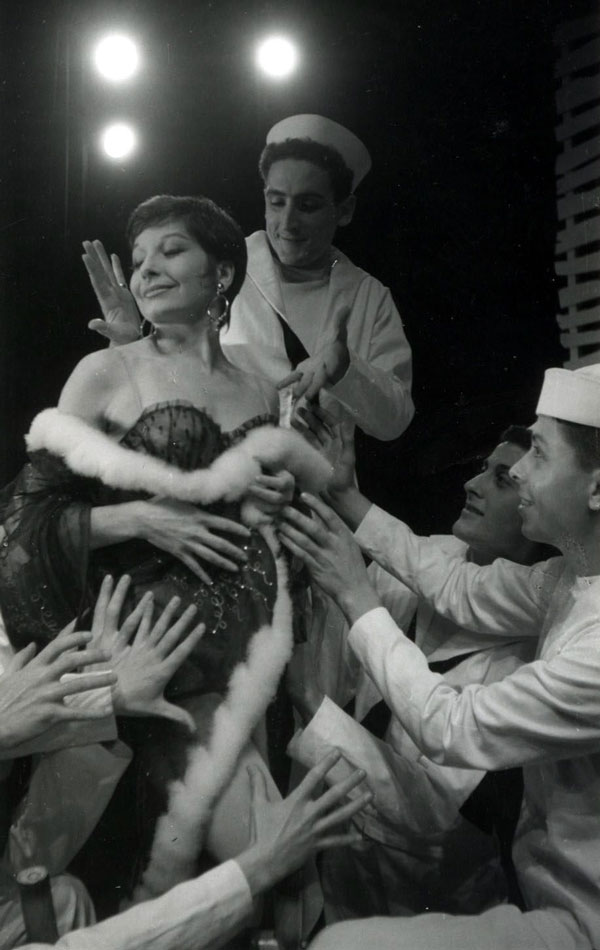
Dancers concocted pastes of lard or spermaceti wax from whales. This was smelly, as animal fat went rancid fast
Logistic problems aren’t unprecedented. The Ballets Russes total-art approach included make-up intentions in costume designs, often demanding part-body cover, including most of the Leichner range for Schéhérazade (1910). For well over a century darker-pigmented cosmetic on a white skin was a ballet norm – Leichner instruction charts specify the number of the stick to imitate the world’s ‘exotic’ skin tones – while actual people in those colours remained unwelcome in ballet until recently. Under costumes, the Russes dancers originally wore skin-tight, wrist-length jersey tops dyed, like their tights, to a character’s tone so only face and hands needed fresh making-up between an evening’s several ballets. When Serge Diaghilev banned these garments, all the company protested at the extra effort.
Russes dancers became media stars, knowledgeable about magazine reproduction of stage photographs, and quick to understand the camera’s hunger for facial structure, especially cheekbones, contouring with light and dark shades, shiny and matte surfaces. They were more sophisticated than contemporary players in early movies, whose stage cosmetics registered crudely on monochrome film shot under harsh lights. Dancers added products and techniques created for screen and the new civilian use from around 1910: lipsticks in metal tubes, individual lashes glued to their own, thin tinted cream foundations and experimental oil-enriched cake powder cover, applied with a damp sponge, that culminated in Max Factor’s 1938 Pan-Cake – as used in that wonder of ballet movies, The Red Shoes (see below).

As Carrington-Lee points out, dancers professionally evaluate their own faces as a controllable extension of their body line. Their make-up can consciously epitomise a time: no movie faces were more Art Deco than Russes dancers’ in Le Train Bleu or Les Biches (both 1924). More often they refract fashion, seeming timelessly balletic live on stage but revealing the production date when the photographs are seen years later. The Scouse brows of now are going to date like Tamara Karsavina’s in The Firebird (1910), unplucked, soap-stiffened, and darkened.
Carrington-Lee says modern ballet audiences, ‘direct a lot of their focus on a face,’ engage directly with it, seeking what it communicates more than beauty, and over the past few decades they’ve accepted much more physical realism on stage. She worked for months with designer Tim Yip on Akram Khan’s ENB Giselle (2016), making Yip’s visual concepts flesh, or anyway flesh-coloured, but in the end Khan refused conventional make-up, and the lighting that displays it. He believes the whole body, loose natural hair to unblocked toes, creates character and narrative through dance. Part of the shock of that show, especially in filmed close-up, is watching a dozen ballerinas on stage without a brushful of mascara between them.
WATCH
Exploring the design of The Red Shoes.
Flaunting feelings
Recreating ballet make-up in The Red Shoes.
George Blackler, Eric Carter and Ernest Gosser aren’t on the credits of The Red Shoes, the 1948 ballet-focussed film by Michael Powell and Emeric Pressburger. But given how much of its footage is dominated by faces more than feet, they should have a title card, because they did its make-up, which has a huge role in the film.
Some of their work was cinema naturalism, everybody seemingly wearing their own faces, moderately pointed up for Moira Shearer as ballerina Vicky Page (her redhead’s faint eyebrows pencil-defined and possible freckles covered up) and full-glamourised for Ludmilla Tchérina’s Parisian-fashion pale skin, dark arc of brow and lip. That style of movie make-up was based around sponged-on Pan-Cake, Max Factor’s thin but cover-all foundation developed for film lighting and plentifully over-powdered.
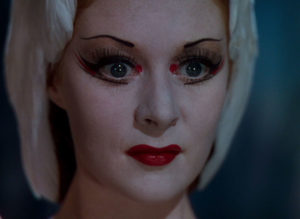
But for The Red Shoes, the artists had to create full theatre character make-ups that would ‘read’ in the same way that an auditorium audience sees performers onstage, a complete illusion of a visage. These same make-ups were also shot in tight close-up, revealing all the artifice – in fact, revelling in the drama and weird textures. Léonide Massine as the can-can dancer in La Boutique Fantastique and the shoemaker in the Red Shoes ballet-within-the film, and Robert Helpmann as Dr Coppelius flaunt full greasepaint, cartooning in character faces on their own.
Shearer’s stage maquillage is a visible expression of what Vicky feels and can’t say. For her Swan Lake Odette, her own eyebrows have been powdered out and straight black lines slant steeply above them; there are red dots between eye and nose, supposed to open up the area; her darkest red lips are drawn in a rectangular shape fashionable in the mid 1940s, often shown in comic strips. That cruelly hard face looks out mid-fouetté and spots the company impresario come to assess not just her talent but her obsessiveness. By the time it’s put on again for the heroine of The Red Shoes those alarmed eyebrows and set bar of a mouth are just stylised distress and pain.
Laurent Liotardo danced with English National Ballet and is now a freelance photographer and filmmaker based in London.
Ophelia Liu is a designer and makeup artist born in Hong Kong and based in London. She won season 2 of Glow Up (Netflix/BBC) and designs the clothing brand 18 Levels Of.

